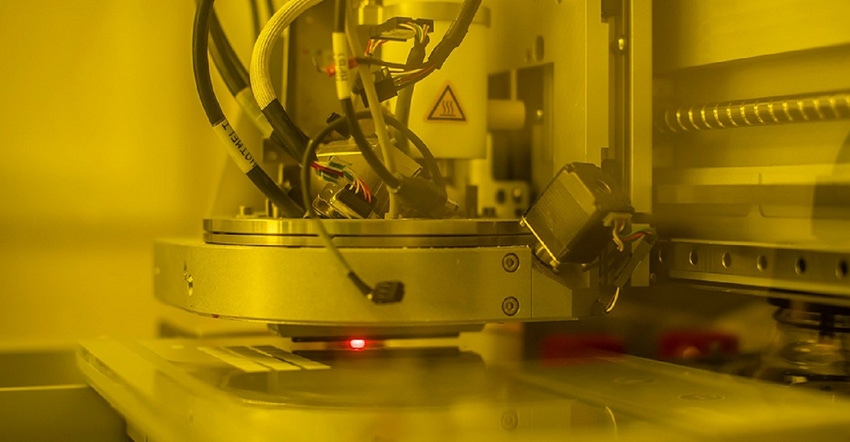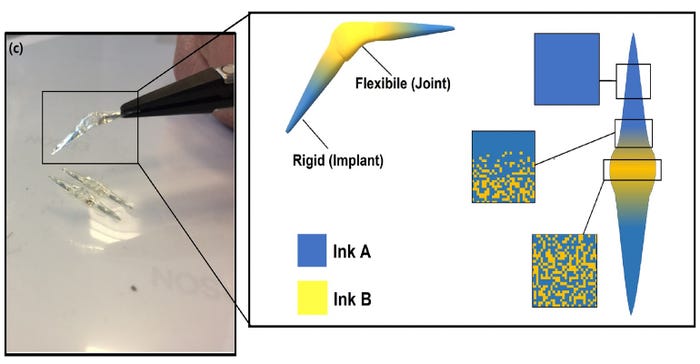A Big 3D Print Step: Custom Body Parts Made From Antibacterial Material
The University of Nottingham has developed a process to 3D-print custom medical devices to boost performance and bacterial resistance.
June 10, 2021

Using a new 3D printing technology, University of Nottingham researchers have discovered how to tailor-make artificial body parts and other medical devices with built-in functionality. The result is better shape and durability while cutting the risk of bacterial infection.
Researcher leader, Dr. Yinfeng He from the Centre for Additive Manufacturing, noted that “Most mass-produced medical devices fail to completely meet the unique and complex needs of their users. Similarly, single-material 3D printing methods have design limitations that cannot produce a bespoke device with multiple biological or mechanical functions.”

His team developed an innovative design process that can be applied to 3D-print any medical device that needs customizable shapes and functions. He noted that the method could be adapted to create a highly-bespoke one-piece prosthetic limb or joint to replace a lost finger or leg that can fit the patient perfectly to improve their comfort and the prosthetic’s durability. “For the first time, using a computer-aided, multi-material 3D-print technique, we demonstrate it is possible to combine complex functions within one customized healthcare device to enhance patient wellbeing,” said He.
He also explained that the technology can be used to print customized pills containing multiple drugs - known as polypills – that can be optimized to release into the body in a pre-designed therapeutic sequence. According to He, this technique could improve the health and wellbeing of older people and ease the financial burden on the government.
The Development Process
The researchers applied a computer algorithm to design and manufacture - pixel by pixel - 3D-printed objects made up of two polymer materials of differing stiffness that also prevent the build-up of bacterial biofilm. By optimizing the stiffness in this way, they successfully achieved customized parts that offer the required flexibility and strength.
Current artificial finger joint replacements use both silicone and metal parts that offer the wearer a standardized level of dexterity while still being rigid enough to implant into the bone. For this study, the team was able to 3D-print a finger joint offering these dual requirements in one device, while also being able to customize its shape, size, and strength to fit the individual patient.
With this added level of design control, the team was able to perform a new style of 3D printing with multi-materials that are intrinsically bacteria-resistant and bio-functional. This allows them to combat infection without the use of added antibiotic drugs.
The team also used a new high-resolution characterization technique (3D orbitSIMS) to 3D-map the chemistry of the print structures and to test the bonding between them throughout the part. This assured that the two materials were intermingling at their interfaces, a sign of good bonding which results in a device unlikely to break.
The study was carried out by the Centre for Additive Manufacturing (CfAM) and funded by the Engineering and Physical Sciences Research Council. The complete findings are published in Advanced Science, in a paper entitled: “Exploiting generative design for 3D printing of bacterial biofilm resistant composite devices.”
Before commercializing the technique, the researchers plan to broaden its potential uses by testing it on more advanced materials with extra functionalities such as controlling immune responses and promoting stem cell attachment.
Rob Spiegel has covered manufacturing for 19 years, 17 of them for Design News. Other topics he has covered include automation, supply chain technology, alternative energy, and cybersecurity. For 10 years, he was the owner and publisher of the food magazine Chile Pepper.
About the Author(s)
You May Also Like





